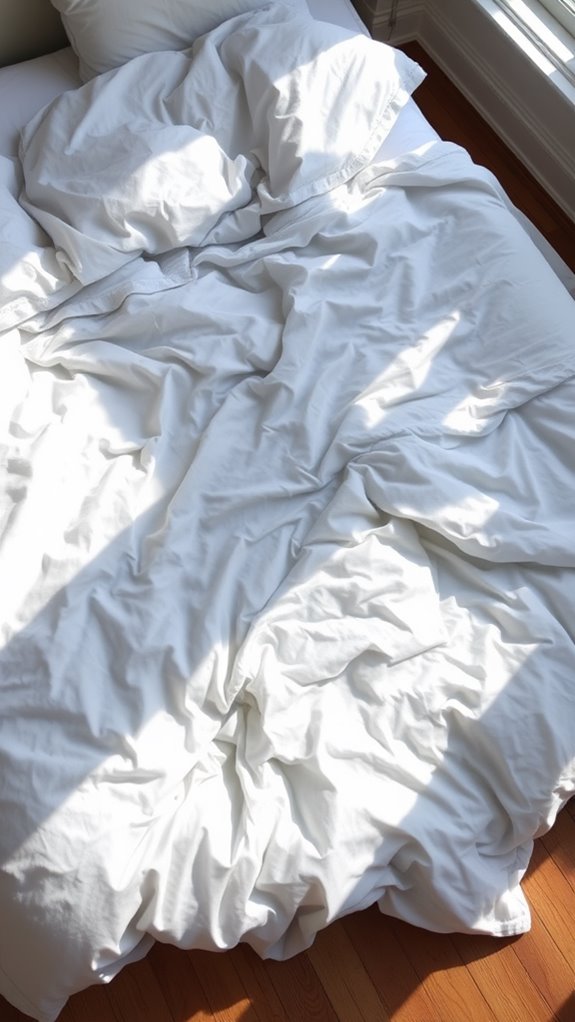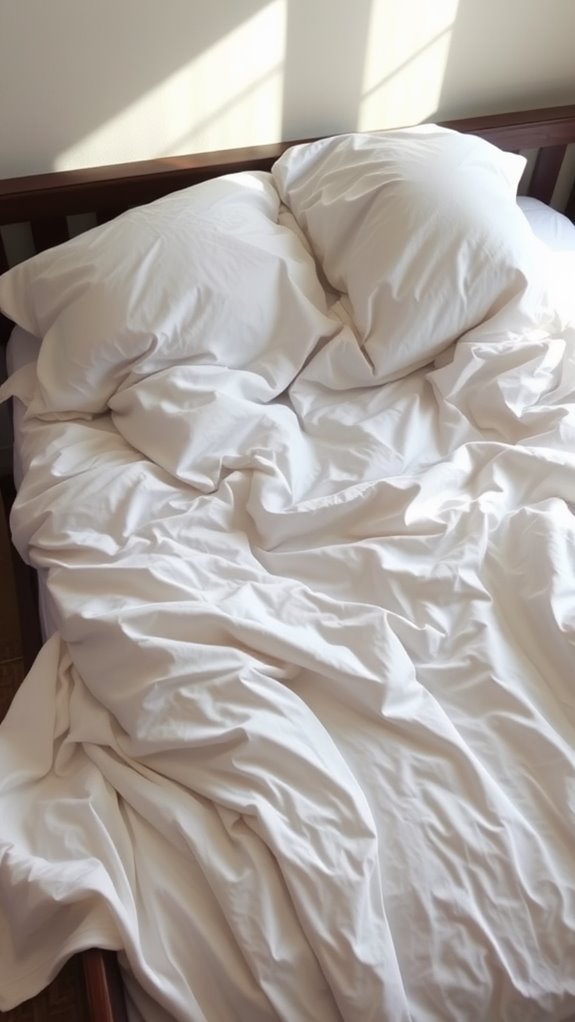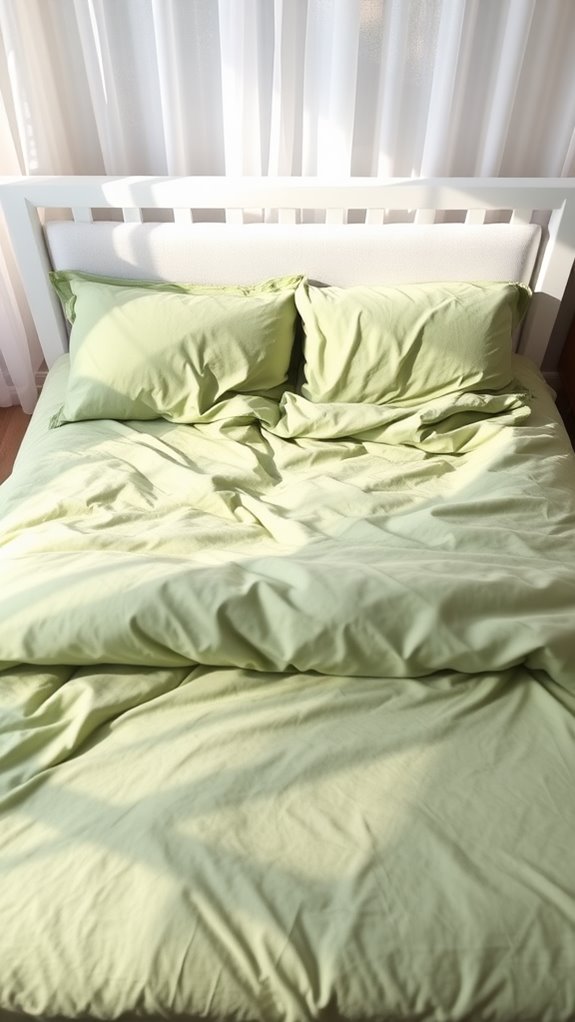Why Does My Duvet Cover Not Fit? Reasons and Solutions
Last weekend, my friend Sarah called me in a panic. “I need your help!” she blurted. “My new duvet cover looks like a deflated balloon on my bed!” As someone who’s spent years working in home furnishings, I couldn’t help but chuckle. When I arrived at her place, I found her tangled in yards of fabric, looking utterly defeated. Her king-sized duvet was swimming in what was clearly a super-king cover, creating sad, droopy corners and a messy middle that resembled a lumpy cloud.
“Hold on,” I told her, already reaching for my secret weapon – those nifty corner clips I always keep handy. After a quick lesson in duvet-wrangling and proper size matching, Sarah’s bed transformed from chaos to hotel-worthy. Now she jokes that I’m her “bedding whisperer,” but really, I just understand the common pitfalls of duvet cover fitting – and I’m here to share those secrets with you.
Why Does My Duvet Cover Not Fit?

Have you ever wrestled with a duvet cover that seems to have a mind of its own? I’ve been there!
The frustrating fit issues often stem from sizing mismatches – those sneaky manufacturers love labeling one size for both Queen and King bedding.
Add European sizing differences and fluffy down comforters to the mix, and you’ll need precise measurements to avoid a duvet-cover wrestling match every morning.
How to Make a Duvet Cover Fit Better

I’ve wrestled with ill-fitting duvet covers more times than I care to admit, but I’ve learned some game-changing tricks to make your life easier.
Accurate measurements are your best friend here – trust me, you’ll want to double-check those dimensions before you commit to a purchase, and don’t forget to look for those handy corner ties that’ll keep everything in place.
Whether you’re dealing with a too-big cover or a too-small insert, I’ll show you how layering techniques and strategic insert swapping can transform your bedding from a nightly wrestling match into the cozy sanctuary you deserve. Additionally, choosing bedding with breathable fabrics can enhance your comfort level and improve your sleep quality.
Measure Twice, Buy Once
Three simple words can save you from duvet cover chaos: measure, measure, measure!
Before you purchase any bedding, I’ll show you how to avoid size mismatches between American and European dimensions. Let’s break down standard measurements to ensure your duvet fits perfectly:
| Size | American (inches) | European (cm) |
|---|---|---|
| Twin | 68 x 88 | 135 x 200 |
| Full | 80 x 88 | 200 x 200 |
| Queen | 88 x 88 | 220 x 220 |
| King | 104 x 88 | 240 x 220 |
Corner Ties Are Your Best Friend
When your duvet starts playing hide-and-seek inside its cover, those little corner ties become your secret weapon for keeping everything in place.
I’ve found the Burrito Method works wonders with corner ties for perfect insertion technique.
For extra stability and a snug fit, I recommend sewing additional ties onto your duvet.
Trust me, it’s worth it—no more midnight duvet slippage! Additionally, ensuring the right comforter size will help maximize your bedroom comfort and prevent any fitting issues.
Choose the Right Insert Thickness
Now that you’ve mastered the art of corner ties, let’s tackle another game-changer in the duvet-fitting world: selecting the perfect insert thickness.
Your duvet cover needs enough room to accommodate bulk without looking like a sad, wrinkly mess. I always measure dimensions carefully and consider fill power when choosing my inserts.
- Feel the luxurious embrace of a perfectly fitted duvet
- Say goodbye to the dreaded “saggy bedding syndrome”
- Experience the joy of a fuller look without the wrestling match
- Wake up to a beautifully structured bed that looks hotel-worthy
Layer It Up
Getting your duvet cover to fit perfectly doesn’t have to feel like solving a Rubik’s cube. I’ll show you how layering strategies can make a world of difference. First, measure your dimensions for compatibility, then use my tried-and-true layering guide below:
| Layer | Method | Result |
|---|---|---|
| Bottom | Burrito Method | Secure base |
| Middle | Redistribute fill | Even coverage |
| Top | Non-slip fabric | Ultimate stability |
Swap the Insert
The perfect duvet cover fit often comes down to a simple solution: swapping out your insert. When you’re dealing with size mismatches between different brands, I recommend measuring dimensions carefully.
You can prevent bedding mishaps by choosing a smaller duvet or larger duvet insert that’s more compatible with your cover.
- No more wrestling with excess fabric like you’re in a pillow fight gone wrong
- Say goodbye to that sad, empty corner syndrome
- Finally achieve that magazine-worthy bed you’ve been dreaming about
- Sleep soundly knowing your duvet won’t play hide-and-seek overnight
Go Custom
When standard duvet covers just aren’t cutting it, going custom might be your ticket to bedding bliss. I’ve found that getting a tailored fit is easier than you’d think! First, measure your duvet’s dimensions carefully, then consider these custom options:
| Option | What You’ll Need |
|---|---|
| DIY Sewing | Basic sewing skills, fabric |
| Local Seamstress | Measurements, fabric choice |
| Online Custom | Exact dimensions, fabric preferences |
| Corner Ties | Basic materials, simple stitching |
| Burrito Method | Nothing extra – just technique |
Find the Best Duvet Cover for a Perfect Fit

Looking for the perfect duvet cover fit doesn’t have to feel like searching for a needle in a fabric store haystack – I’ve got your back with some game-changing tips.
First, I’ll show you how to match sizes like a pro by measuring your duvet and choosing compatible covers with corner ties, because nobody wants their duvet doing the midnight shuffle. When you find a brand that works for your bedding needs, stick with it and pay attention to fabric types (trust me, slippery silk might look luxurious, but it’s not your friend when it comes to keeping everything in place). Additionally, choosing bedding that complements beige headboards will enhance the overall aesthetic of your bedroom.
Match Sizes Like a Pro
Since finding the perfect duvet cover can feel like solving a complex puzzle, I’ll help you crack the sizing code once and for all.
Don’t let oversized covers or manufacturer confusion get you down! I always measure twice and check specific dimensions, even when dealing with fluffy inserts. The Burrito Method is my go-to for a snug fit.
- Never trust size labels blindly – they’re more like suggestions than rules! 😉
- Your measuring tape is your new best friend in this bedding adventure
- Think of it as a cozy matchmaking game between duvet and cover
- Say goodbye to that annoying corner-shifting drama once and for all. Remember, selecting bedding that complements your wall color can also enhance the overall aesthetic of your room.
Fabric Matters
The secret superpower of a perfectly fitted duvet cover lies in its fabric choice – trust me, I’ve learned this through countless nights of wrestling with slippery covers!
I’ve discovered that textured fabrics grip better than slippery materials, while higher thread count options reduce bagginess.
For ultimate stability, look for duvet covers with corner ties or gripper fabrics.
And don’t forget to pre-wash cotton covers to prevent shrinking surprises! Additionally, choosing the right bedding color combinations can enhance the overall comfort and aesthetic of your bedroom.
Look for Adjustable Features
Beyond fabric choice, adjustable features are your secret weapon in the battle against unruly duvets.
I’ve found that adjustable ties, elasticized corners, and hidden zippers are game-changers for achieving that perfect, snug fit.
Let’s be honest – nobody wants their duvet playing hide-and-seek at 3 AM!
- Never wrestle with a shifting duvet again
- Say goodbye to midnight duvet readjustments
- Wake up to perfectly aligned bedding
- Experience the joy of a properly secured duvet
Stick to One Brand
Finding your perfect brand match for duvet covers is like discovering your soulmate in the bedding world – once you’ve found ‘the one,’ stick with it!
| Brand Benefits | Brand Challenges |
|---|---|
| Standardized dimensions | Size mismatches with other brands |
| Perfect fit guaranteed | Excess fabric issues |
| No awkward crumpling | Limited design options |
| Matching sets enhance overall aesthetic | Higher cost commitment |
Trust me, I’ve learned that staying loyal to one brand eliminates those frustrating compatibility issues and keeps your bedding looking crisp and coordinated.
Frequently Asked Questions
Why Are My Duvet Covers Always Too Big?
I understand your frustration. Your duvet covers are oversized to fit thicker comforters and allow for shrinkage. Plus, many covers are labeled for multiple sizes, which means extra fabric when using specific-sized duvets.
Why Is My Duvet Cover so Loose?
I’ll explain: Your duvet cover’s looseness likely stems from size mismatches, oversized designs for fluffy comforters, or slippery fabrics. The cover may also be too large if it’s meant for multiple sizes.
Should Your Duvet Cover Be Bigger Than Your Duvet?
Yes, I recommend your duvet cover be 2-5 inches larger than your duvet on each side. I’ve found this extra room prevents bunching, allows for easy insertion, and accommodates natural shrinkage after washing.
How Do You Fix a Duvet Cover That Is Too Big for a Duvet?
I recommend using duvet clips to secure corners, then try the Burrito Method for insertion. You can also sew the cover smaller or tuck excess fabric under. These tricks will help create a snugger fit.
In Conclusion
Getting the right duvet cover fit comes down to three key factors: accurate measurements, size matching, and using corner ties properly. Choosing covers and duvets from the same brand helps ensure compatibility, while considering fabric types prevents slipping issues.
Want to solve your duvet cover problems? Start by measuring your duvet insert today, check the cover dimensions before buying, and always use those built-in corner fasteners. Your perfectly fitted duvet cover awaits.
